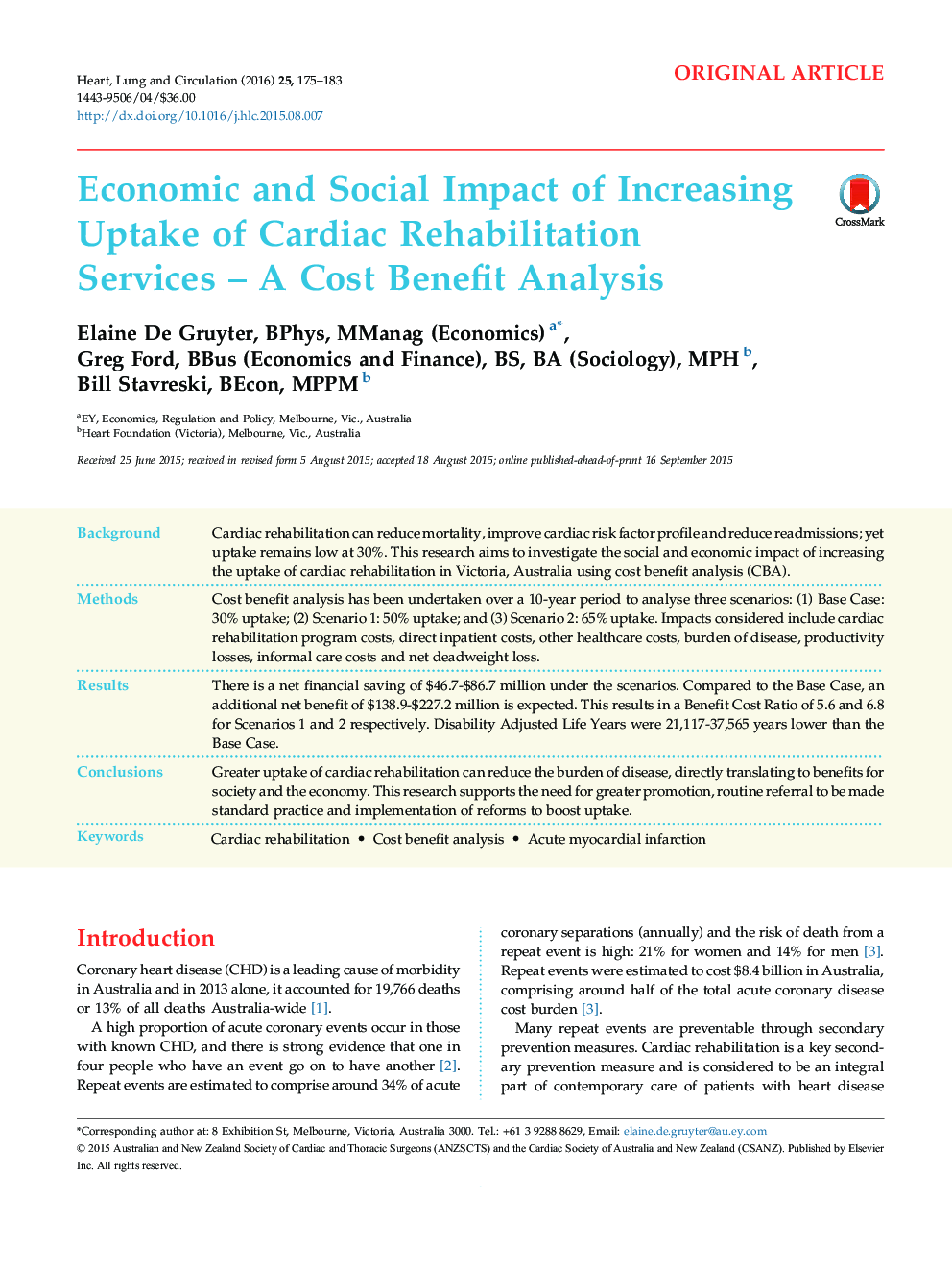| Article ID | Journal | Published Year | Pages | File Type |
|---|---|---|---|---|
| 2916887 | Heart, Lung and Circulation | 2016 | 9 Pages |
BackgroundCardiac rehabilitation can reduce mortality, improve cardiac risk factor profile and reduce readmissions; yet uptake remains low at 30%. This research aims to investigate the social and economic impact of increasing the uptake of cardiac rehabilitation in Victoria, Australia using cost benefit analysis (CBA).MethodsCost benefit analysis has been undertaken over a 10-year period to analyse three scenarios: (1) Base Case: 30% uptake; (2) Scenario 1: 50% uptake; and (3) Scenario 2: 65% uptake. Impacts considered include cardiac rehabilitation program costs, direct inpatient costs, other healthcare costs, burden of disease, productivity losses, informal care costs and net deadweight loss.ResultsThere is a net financial saving of $46.7-$86.7 million under the scenarios. Compared to the Base Case, an additional net benefit of $138.9-$227.2 million is expected. This results in a Benefit Cost Ratio of 5.6 and 6.8 for Scenarios 1 and 2 respectively. Disability Adjusted Life Years were 21,117-37,565 years lower than the Base Case.ConclusionsGreater uptake of cardiac rehabilitation can reduce the burden of disease, directly translating to benefits for society and the economy. This research supports the need for greater promotion, routine referral to be made standard practice and implementation of reforms to boost uptake.
